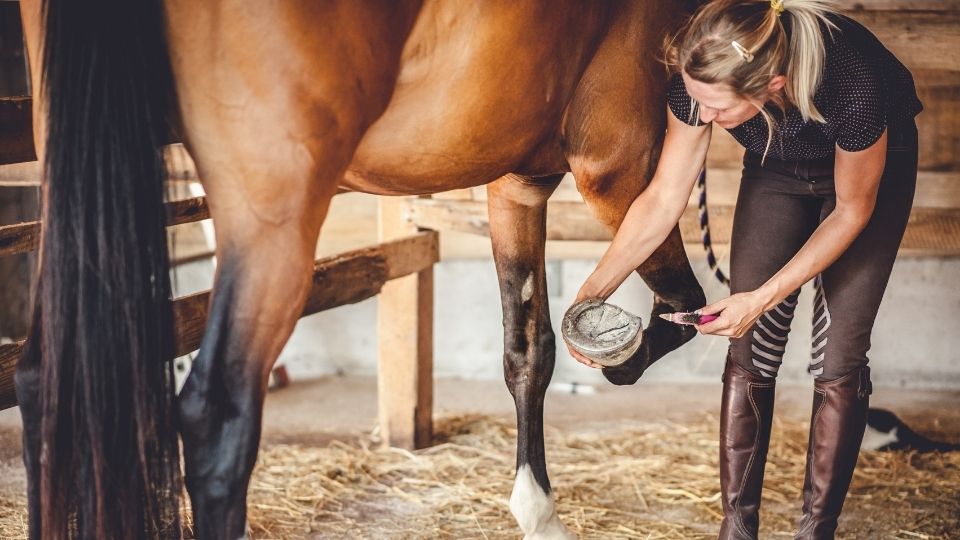
How Long Should a Horse Be Sore After a Trim? Shocking Insights
Share
As a health-conscious pet owner, understanding your horses well-being is paramount, especially when it comes to **trimming their hooves**. The question 'how long should a horse be sore after a trim' often pops up among horse owners. After a trim, it is natural for your horse to experience slight soreness; however, the duration of this soreness can vary widely based on several factors.
To get to the heart of the matter, let's first explore what happens during a hoof trim and the common responses your horse might have. A trim involves removing excess hoof growth, and sometimes it can lead to various reactions, such as soreness or discomfort.

Understanding Hoof Trimming
Hoof trimming is essential for maintaining your horse's health. Just as regular dental checkups and vaccinations are vital, keeping your horse's hooves in top shape can prevent more serious issues. Hoof care is not just about aesthetics; it directly affects your horse's overall health and performance.
The Trimming Process
During the trimming process, your **farrier** will typically seek to balance the hoof and maintain its natural shape. However, horses that are unaccustomed to being trimmed might exhibit more **soreness** than others. Factors contributing to how long your horse might be sore include:
- The condition of the hooves prior to trimming.
- The experience and skill of the farrier.
- How the trimming was performed (methodology, tools used).
It is important to know that some horses may show signs of soreness immediately after, while others may not demonstrate any soreness at all. In general, you can expect low-level discomfort to last anywhere from a few hours to several days.

Signs of Soreness
Recognizing the signs of soreness in your horse is crucial. Common symptoms include:
- **Limping** or favoring one leg over the other.
- **Reluctance** to walk or run.
- Excessive **pawing** at the ground.
- **Pinning** ears back or exhibiting discomfort when touched on the hooves.
Paying close attention to your horse's behavior during this period will help you gauge whether the soreness is normal or if it requires veterinary attention.
Recovery Time
Generally, after trimming, most horses will start to feel better within a few days. However, its essential to monitor their recovery closely. If soreness persists beyond four or five days, or if the situation worsens, its wise to consult your veterinarian for an evaluation. A veterinarian can ensure that there are no underlying issues affecting your horse's health.

Preventing Soreness
To minimize soreness after trims, consider following these practices:
- Choose a skilled and patient **farrier**.
- Keep your horse accustomed to hoof handling between trims.
- Gradually adjust the length of time between trims to fit your horses individual needs.
Staying proactive in hoof care will not only benefit your horses comfort but also promote **overall health**.

Importance of Hoof Care
Understanding hoof care goes beyond just the trim itself. For comprehensive insights into keeping your horses hooves healthy, check the article on how to trim horse hooves. Regular hoof care can prevent issues such as **laminitis**, **split hooves**, and infections, which are far more serious than minor soreness after a trim.
What If My Horse Is Always Sore?
If your horse consistently shows signs of soreness after a trim, this could indicate underlying problems with their hoof structure or alignment. Consider scheduling regular visits with your farrier and discuss your concerns to develop a tailored hoof care plan. Additionally, ensure that the environment in which your horse lives is conducive to hoof health, incorporating factors such as **nutrition** and movement.
Conclusion
Knowing 'how long should a horse be sore after a trim' helps health-conscious pet owners maintain awareness of their horse's needs. By monitoring signs of discomfort and regularly checking in with your farrier and veterinarian, you can ensure that your horse remains happy and healthy.
Frequently Asked Questions
1. How can I tell if my horse is in pain after a trim?
Look for signs such as limping, excessive pawing, or reluctance to walk. If these symptoms persist, consult a veterinarian.
2. Is some discomfort normal after trimming?
Yes, its normal for horses to experience slight discomfort after a trim, but it should not last more than a few days.
3. What can I do to alleviate my horse's soreness?
Ensure your horse is well-hydrated, consider reflection and rest, and consult with a veterinarian if soreness continues.
For detailed care on addressing hoof problems, you might want to review the information on split hoof care. Remember, always prioritize your horse's health and comfort in every aspect of their care.
As an Amazon Associate, I earn from qualifying purchases.
